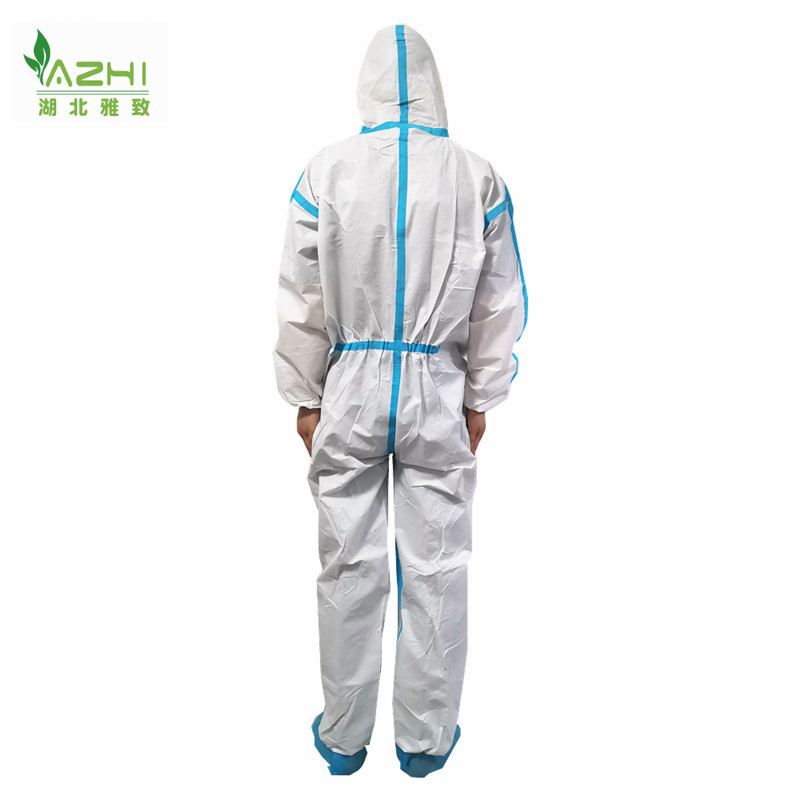News
The Evolution of Disposable Medical Clothing: From Past to Present
Nov 01,2025
The Evolution of Disposable Medical Clothing: From Past to Present
Table of Contents
1. Introduction to Disposable Medical Clothing
2. Historical Perspective: The Birth of Medical Attire
3. The Rise of Disposable Medical Clothing
4. Materials Used in Disposable Medical Clothing
4.1. Non-Woven Fabrics
4.2. Breathable Polyethylene
4.3. Antimicrobial Coatings
5. Different Types of Disposable Medical Clothing
5.1. Surgical Gowns
5.2. Isolation Gowns
5.3. Face Masks and Shields
5.4. Gloves and Footwear
6. Importance of Disposable Medical Clothing in Infection Control
7. Innovations in Disposable Medical Clothing
8. Future Trends in Disposable Medical Attire
9. Conclusion
10. FAQs
1. Introduction to Disposable Medical Clothing
Disposable medical clothing plays an essential role in the healthcare industry, serving as a barrier against infections and contamination. This article traces the **evolution of disposable medical clothing**, examining its significance, materials, and implications for patient care and safety.
2. Historical Perspective: The Birth of Medical Attire
Before the advent of disposable options, medical professionals relied on **reusable fabrics** that required extensive laundering and sterilization. Historically, medical attire included simple garments made from cloth, which posed significant challenges regarding hygiene and safety. The need for more effective solutions led to innovations that would revolutionize medical clothing, particularly during the mid-20th century.
3. The Rise of Disposable Medical Clothing
The shift towards disposable medical clothing gained momentum in the 1960s and 1970s, largely due to the increasing awareness of hospital-acquired infections (HAIs). As healthcare facilities sought to improve patient outcomes, the introduction of disposable garments became a key strategy in infection control. These garments not only reduced the likelihood of cross-contamination but also simplified the logistics of maintaining hygiene standards.
4. Materials Used in Disposable Medical Clothing
Understanding the materials used in disposable medical clothing is crucial for appreciating their effectiveness and comfort. Various innovations have emerged, leading to the development of specialized fabrics suited for medical applications.
4.1. Non-Woven Fabrics
Non-woven fabrics represent a significant technological advancement, offering lightweight and breathable options that provide effective barriers against fluids and pathogens. These materials are engineered through processes like **spunbonding** and **thermal bonding**, resulting in fabrics that are both durable and comfortable for extended wear.
4.2. Breathable Polyethylene
Breathable polyethylene is another important material used in disposable medical garments. This material allows for moisture vapor transmission while providing a protective barrier, making it ideal for surgical gowns and isolation wear.
4.3. Antimicrobial Coatings
To enhance the safety of disposable clothing, many manufacturers are incorporating **antimicrobial coatings** that inhibit the growth of bacteria and viruses. This innovation is particularly crucial in high-risk environments, such as operating rooms and intensive care units.
5. Different Types of Disposable Medical Clothing
Various types of disposable medical clothing serve distinct purposes within healthcare settings. Understanding these different categories helps in selecting the right attire for specific situations.
5.1. Surgical Gowns
Surgical gowns are designed to protect both the patient and the healthcare provider during surgical procedures. They must meet stringent standards for fluid resistance, comfort, and breathability. Most surgical gowns are made from non-woven materials to provide an effective barrier against contamination.
5.2. Isolation Gowns
Isolation gowns are used to protect healthcare workers and patients from the transfer of microorganisms. These gowns are typically utilized in hospitals when caring for patients with infectious diseases, ensuring that the wearer remains safe while providing necessary care.
5.3. Face Masks and Shields
Face masks and shields are integral components of disposable medical clothing, serving as barriers to protect the respiratory system from airborne pathogens. High-filtration masks are essential during procedures, while face shields provide additional protection against splashes.
5.4. Gloves and Footwear
Disposable gloves are critical in minimizing the risk of infection during patient interaction. Various materials, including latex, nitrile, and vinyl, are used to provide varying levels of protection and sensitivity. Additionally, disposable footwear covers can help maintain sterile environments in operating rooms and other controlled settings.
6. Importance of Disposable Medical Clothing in Infection Control
The role of disposable medical clothing in infection control cannot be overstated. By acting as physical barriers, these garments significantly reduce the transmission of pathogens. In environments like hospitals, where patients may be vulnerable to infections, the use of disposable attire becomes vital to protect both patients and healthcare workers.
7. Innovations in Disposable Medical Clothing
Advancements in technology and materials have led to continuous innovation in disposable medical clothing. Manufacturers are exploring smart textiles, incorporating sensors to monitor environmental conditions, and developing fabrics that can change their properties in response to specific stimuli, enhancing both safety and comfort.
8. Future Trends in Disposable Medical Attire
Looking ahead, the future of disposable medical clothing is geared towards sustainability and improved functionality. As concerns over environmental impact grow, manufacturers are exploring biodegradable materials and more eco-friendly production processes. Additionally, the integration of technology into medical clothing will likely expand, enhancing monitoring and protective capabilities.
9. Conclusion
The evolution of disposable medical clothing reflects the healthcare industry's response to the changing landscape of patient care and infection control. From its humble beginnings to the sophisticated garments of today, disposable medical attire has become indispensable in preventing infections and safeguarding patient health. As technology continues to evolve, we can expect even more innovative solutions to emerge, shaping the future of medical clothing.
10. FAQs
1. What are disposable medical clothing and its primary purpose?
Disposable medical clothing is designed to provide safety and hygiene in healthcare settings, protecting both patients and healthcare workers from infections and contamination.
2. How has disposable medical clothing evolved over the years?
The evolution of disposable medical clothing has transitioned from reusable garments to high-tech, single-use attire made from advanced materials that enhance safety and comfort.
3. What materials are commonly used in disposable medical clothing?
Common materials include non-woven fabrics, breathable polyethylene, and fabrics with antimicrobial coatings to provide effective barriers against pathogens.
4. Why is disposable medical clothing crucial for infection control?
Disposable medical clothing serves as a physical barrier that significantly reduces the risk of transmitting infections in healthcare settings, protecting both patients and healthcare providers.
5. What future trends are expected in disposable medical clothing?
Future trends may include increased sustainability through biodegradable materials, as well as the integration of smart textiles for enhanced monitoring and protection capabilities.
Nov 01,2025
Category:
knowledge
Related Information








 Language
Language English
English Español
Español Português
Português اللغة العربية
اللغة العربية





